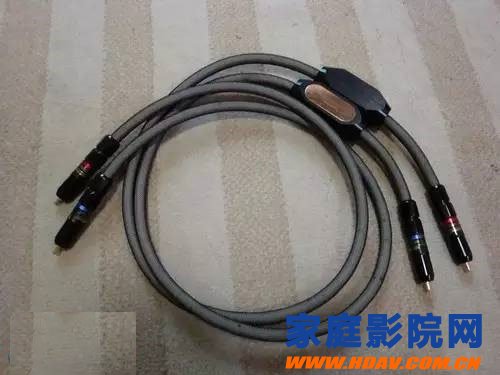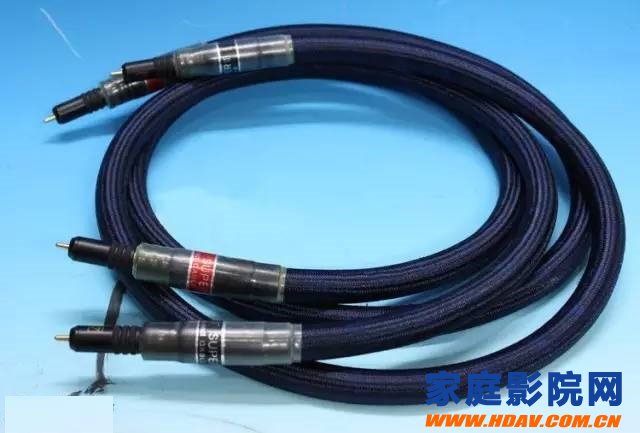LeTV and TCL Launch 65/55 HDR Curved 4K Super TV
[Home Theater Network HDAV.com.cn] Today we have a relationship between the fever wire and the sound of the sound system. Today's topic is "Is the fever wire really deceptive? Of course, the real question is really very sharp, and for many fans who have a fever, this is a more confusing question. Here In order to let everyone participate in it, I will try not to use or use words that are too deep.
In the audio fever circle, in fact, its understanding is also divided into two factions: wire useful theory VS wire useless. (How do you say that there is no neutrality? Please, this question is the same as the light in the home, the light is only bright and not bright.)
According to the useful theory, the wire is affected by factors such as material, process, length, thickness, etc. Different wires have different sounds, and the wire can change/harmonize the sound of the sound system.
The useless theory believes that the main influence parameters of the speaker that determines the sound of the sound system are the impedance (R), the inductance (L) and the capacitive reactance (C) of the wire. The parameters of the three wires are the same, so the sound of the high-priced wire and the low-priced wire is the same.
I personally think that wire is useful. Of course, this is a prerequisite, that is, the sensitivity of the individual to the sound sensitivity and audio equipment. Because the difference in the ability of the human ear to discriminate between music (that is, sensitivity), under normal circumstances, the sound of the same equipment, children will hear more details than the elderly, when people are getting older, The ear will become more and more dull and even inaudible, especially at high frequencies. Therefore, if the music lover is not sensitive enough to the sound, there is no need for the wire to be useful. On the other hand, from the sensitivity of the audio equipment, if the sensitivity of the equipment itself is not enough, there will be no sound for the change of the wire. For example, if some netizens are accustomed to using early resolution weak tape or cd player, 200 yuan foreign garbage desktop cd machine, common low-cost factory amp speaker, low-end full-range small box, then it is for you The top-level Odin wire lifting effect is also very limited. Just like taking an early 300,000-pixel mobile phone camera, even if the mobile phone is fixed on the top professional tripod, can you expect the details of the photos taken by this mobile phone? So, the low-end equipment toss the wire There is no value, and at the same time, the tossing of the wire is basically an audiophile to a certain degree of enthusiasts and its own HIFI, hi-end system and monitoring system.
If you just like to listen to the Walkman, you also like the headset cable that comes with the machine. Do you still need to burn the wire?

Explain the preconditions, let me talk about why I think the wire is useful:
Although wire uselessness suggests that impedance (R), inductive reactance (L), and capacitive reactance (C) are correct factors that affect the quality of wire-transferred signals, they ignore a very simple fact: there is no percentage in the world. Hundreds of pure elemental metals. Without 100% pure elemental metal, the impedance, inductive reactance and capacitive reactance of the two wires will definitely be different because of the impurities, so that the wire has its special frequency characteristics, and the signals of different frequencies will have different time extensions. . This special frequency characteristic causes different transmission rates, exhibits different impedances, forms underdamped, and loses music information and details. This is the main cause of signal distortion. In addition, although the current audio cables are mainly copper, silver and other metal conductors, they may carry other impurities. These impurities often cause the transient, phase (music sound field, image, etc.) and dynamics of the sound system to be different. For example, in general, the low-frequency sound transmitted by copper as a wire is slightly thicker and more stable; the high-frequency sound transmitted by the silver wire is transparent and bright. In fact, most audio wire manufacturers produce wire rods that are alloy wires. For example, the US Nordost (music ribbon) can be said to be one of the top wire manufacturers currently recognized. An important patented technology for its online materials is the oxygen-free copper surface extrusion silver plating process, so it can transmit signals at a speed of more than 90% of the light, so that the sound quality is clearer, more accurate, true, and no sound.
Nordost Music Ribbon's second-generation Frey signal line with dual micro-space technology

Transparent (RCC) RCA signal line, a mysterious black box used in its high-end wire, and a special shock absorber under the small black box. This box is Transparent, which is the perfect "soul" for music playback. It contains the exclusive circuit, resistor, capacitor and other components of Transparent, which enables signals of different frequencies to be transmitted at the same time. The delay in time is generated, and the amount of current of the transmitted signal is not lost, so that the signal and dynamic energy are transmitted as they are.

In addition, the wire manufacturing process of different manufacturers is different. For example, wire made of copper. In general, 4N is the ultimate in industrial batch products that can be achieved (the N value reflects the pure and low parameters of the metal. Currently, audio wires are generally made of materials with a purity of 99.99% or more, such as when the purity of the metal is 99.99%. It is customary to say that a 9 is an N, that is, 99.99% is 4N, 99.999% is 5N, and so on.); However, for many enthusiasts who are pursuing the ultimate, they tend to pursue 5N or even 6N, 7N products. Because when we look at the cross section of a typical copper metal with a microscope, we actually see not a single piece of copper, but a combination of impurities and grains. The higher the purity of the wire, the less impurities are contained, and the signals transmitted by the left and right channels tend to be uniform. In addition, the applicability of the process structure of the wire is also very important. The conductor materials of general fever wires are copper, silver, silver-clad copper, special alloys, etc., of which copper is the most, followed by silver. According to the purity of copper, it can be divided into ordinary copper (with impurities), OFC oxygen-free copper, LC-OFC large crystal oxygen-free copper and OCC single crystal copper, and OCC is divided into PCOCC and Super PCOCC. The ratio of copper to other materials is different, and the sound of the wire produced will also change.
Italy National Treasure ART SUPER super signal line, its line conductors are high-purity single crystal copper PCOCC, which achieves the influence of minimum impurities in the transmission direction, with little or no boundaries, smooth surface and characteristic flexibility, so Delivers a very clear signal. In addition, the surface of the conductor is also coated with anti-oxidation amber, and there are many shielding barriers wrapped around it, including high-density polyethylene, patented triple-floating protective fiber cotton, special heat-treated copper foil and various Insulators, etc.

Not counting the above, even the change in the length of the wire will bring about a change in the sound of the sound system. In theory, the same kind of wire should be short. Because the wire itself has interference to the signal, the longer the wire is, the more the signal noise is, and the louder the speaker unit is. (The speaker sound is the speaker unit to do the piston movement, the longer the wire, the more the noise, The signal received by the speaker unit is not clear). In addition to the length and length, the thickness of the wire will also have an effect (here refers to the thickness of the inner conductor of the wire). It is generally considered that the wire of the same material has a finer conductor ratio. The excessively large speaker cable has a large resistance due to its large resistance, which causes the power amplifier to output more power, which is depleted on the resistance of the wire, and the loss of the bass is particularly serious. For a thick wire, the larger the cross-sectional area of ​​the conductor, the smaller the unit resistance value and the less the loss of sound. So in the face of different lengths of wire, can you say that they have no difference in transmitting sound signals?
The design styles of different manufacturers are different. Just like the speaker sound style needs to be divided into British sound, American East Coast sound, American West Coast sound, European sound and Asian sound (Japan sound), etc. In fact, the sound generated by the wire rods produced by manufacturers in different regions is different. of. Take the recent activities and assessments of the Home Appliances Forum Experience Center. The Home Appliances Forum used to have two wires: the American snake king Antares boss balance line and the TELOS Tenglong rose gold flagship balance line. Without changing any equipment, just changing the two, you can clearly feel the change of sound: the snake king wire dynamic, the frequency response is wide, the sound is clear and refreshing, the texture is clear, and the high frequency of TELOS Tenglong rose gold Convergence than the snake king, delicate and smooth. The mid-range is outstanding and I am very fond of my ears.
The Antares is the patented technology of the Snake King Factory, which uses patented spiral geometry and hand-woven design to provide unparalleled sound quality. It provides space, time, speed and detail, as well as dynamics, while not losing any signal to provide a sense of weight and natural tones. The medium frequency is warm, smooth and delicate. The patented geometry of the shield reduces negative capacitive and inductive electrical waveform distortion. Although the structure of the wire body is huge, the weight of the wire body is very light, so it is flexible and convenient in use.

TELOS Tenglong rose gold balance line, the conductor redistributes the internal bare wire diameter combined winding method, adjusts the wire cross-sectional area, redistributes the internal winding ratio, makes the high frequency more delicate and smooth, the intermediate frequency thickness is greatly improved, the low frequency is lower Dive, the overall sound quality is cleaner, the background is quieter and the sound is more stereo. The new gold reference mk2, the innovative in the teles wire coating, blends far-infrared nano-minerals, enabling wire signal transmission to enhance the transmission sensitivity of the conductor by the emission of energy particles, plus the resonance characteristics of the wave to produce the unique gold of TELOS. Yellow noble tone.

The question is coming. If the audiophile level is enough and the quality of the home audio system is enough, I want to feel the fun of replacing the cable. Then, from that place? In fact, based on personal experience, the new wire is changed first. The signal line/balance line and the speaker line are the power line at the end, because the replacement of the signal line and the speaker line is more obvious than the change brought by the replacement of the power line on the sound system. Since the audio source line and the signal line are relatively weak, the wire diameter resistance is required to be small, and the oxygen-free pure copper wire with the shielding layer is the best. If the sound quality is high, it is best not to buy the so-called finished product line of the non-certified brand. , buy good quality oxygen-free pure copper wire, gold-plated plugs to do it yourself. The cross-sectional area of ​​the bus line of the speaker cable should be thick enough for multiple strands, and the number of wires is large, because the dynamic current of the large dynamic music is also large, and the music with detailed details requires a small wire diameter, and the wire body is relatively thin. The line sound will be refined and interpreted. The horn with a thick conductor has a better dynamic energy. Therefore, a good brand line manufacturer will consider and combine these two characteristics to design a fine wire that can transmit the clearest and lossless music signals and has the characteristics of balance and easy control.
In addition, here we need to identify a misunderstanding for everyone: high price line = high quality line.
The average person always thinks that a penny is a share of goods. So the high price line is the high quality line. But this is not true in the hifi audio field. There are three main reasons: 1. Bad dealers/distributors artificially push up the price of wire rods. 2. Brand added value of wire manufacturers. 3, personal listening preferences. In reality, we can often hear fans complain that some bad dealers/distributors artificially push up the price of wire rods and shoddy. In fact, this phenomenon is not a new phenomenon. In the 80s/90s of the last century, because the price of the fever audio ring was unknown, many enthusiasts had the experience of buying imported audio and slaughter in that era. In addition, some of the world's leading manufacturers of wire also contain high value-added brand value, resulting in high prices. In choosing the wire brand, I personally feel that the fans of the tossing equipment are better than the world-famous manufacturers to choose some wire manufacturers with a little less reputation. Because at the same price, the lesser-known manufacturers have more choices of wire types, and it is easier to meet the first point I will explain next.
Everyone's listening preferences are different! Because each person's listening preferences are different, some people like to listen to the shock of low frequency, some people like high-frequency transparency, and some people like to listen to the warmth of the intermediate frequency. Perhaps, the wire itself is a high-priced line for high-frequency space and intermediate frequency, but if it is to the audio enthusiasts who like to listen to low-frequency, it becomes a high-priced inferior line. What should I do at this time? In general, the price of wire rods that the general public can accept is limited. There are not many options for wire rods produced by world-renowned wire rod manufacturers in this range; however, there is a lot of room for choice in manufacturers with a slightly smaller reputation. Incidentally, the Home Appliances Forum and the Headphone Club have trading areas for specialized audio products. It is convenient for enthusiasts to exchange these cards with other enthusiasts. If you really feel that there is no suitable wire, it is also advisable to DIY yourself. As long as the wire makes the sound of the system exactly what you expect, it is worth it. Fever, isn't it a tossing process? (If you want to save trouble + not bad money, or choose a world-famous brand name brand product, after all, save trouble.)
Finally, let me talk about the principle of changing wires, that is rational + learning. Rational understanding of the role of wire, wire is only the seasoning of the sound system, not the main material; good wire is a good thing to add icing on the cake, but it is definitely not a straw in the snow. Generally speaking, the cost of a system's wire rod is 15~20% of the total system cost. Too much is the Puma Golden Saddle. Too little equipment strength is limited. Of course, it is also possible to upgrade the equipment or 25% at hand. The second is to strengthen the understanding of their own systems and knowledge of wire. Communicate with enthusiasts and ask other enthusiasts to learn what is the correct sound, thus improving your listening level. Your own level has improved, even if you are a DIY wire, it will meet the sound standard. More fresh and fun home theater information, please pay attention to home theater network http:// (WeChat: cnhifi), the country's most influential home theater audio player interactive media website.
Note: This article is transferred from the Home Appliances Alliance. The article is an independent view of the author and does not represent the position of the home theater network.
Low-Voltage Motor,Automotive Industry Pump Motor,Oil Pump Motor,Hydraulic Pump Motor
Shaoxing AnFu Energy Equipment Co.Ltd , https://www.sxanfu.com